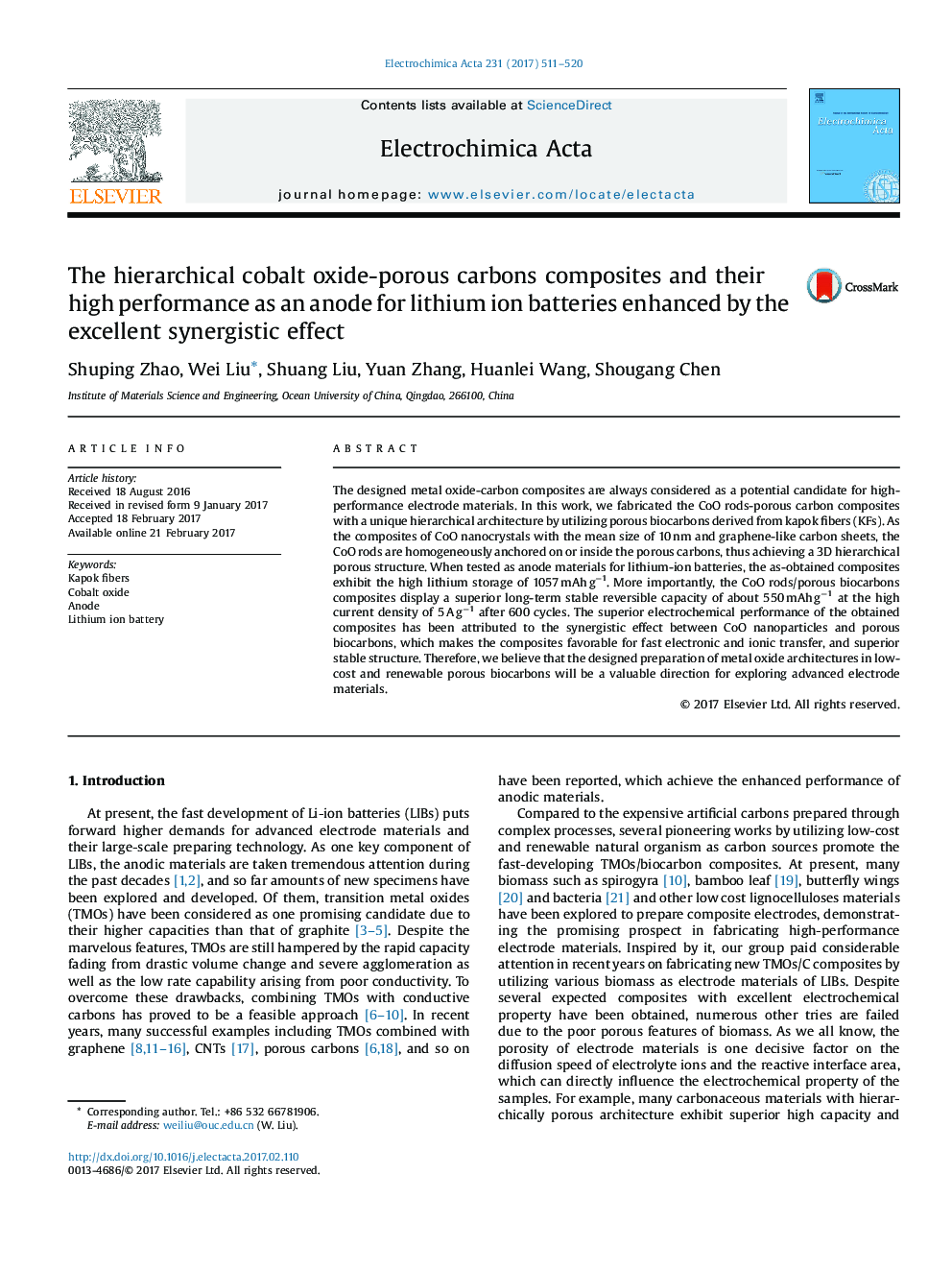| Article ID | Journal | Published Year | Pages | File Type |
|---|---|---|---|---|
| 6472077 | Electrochimica Acta | 2017 | 10 Pages |
â¢The CoO/PBCs composites with unique hierarchical architecture by utilizing porous biocarbons derived from kapok fibers (KFs) have been successfully synthesized.â¢The unique structure is aggregated by CoO rods anchored on the surface or inside the porous carbons.â¢The CoO/PBCs composites exhibit excellent electrochemical performances.
The designed metal oxide-carbon composites are always considered as a potential candidate for high-performance electrode materials. In this work, we fabricated the CoO rods-porous carbon composites with a unique hierarchical architecture by utilizing porous biocarbons derived from kapok fibers (KFs). As the composites of CoO nanocrystals with the mean size of 10 nm and graphene-like carbon sheets, the CoO rods are homogeneously anchored on or inside the porous carbons, thus achieving a 3D hierarchical porous structure. When tested as anode materials for lithium-ion batteries, the as-obtained composites exhibit the high lithium storage of 1057 mAh gâ1. More importantly, the CoO rods/porous biocarbons composites display a superior long-term stable reversible capacity of about 550 mAh gâ1 at the high current density of 5 A gâ1 after 600 cycles. The superior electrochemical performance of the obtained composites has been attributed to the synergistic effect between CoO nanoparticles and porous biocarbons, which makes the composites favorable for fast electronic and ionic transfer, and superior stable structure. Therefore, we believe that the designed preparation of metal oxide architectures in low-cost and renewable porous biocarbons will be a valuable direction for exploring advanced electrode materials.
